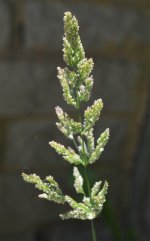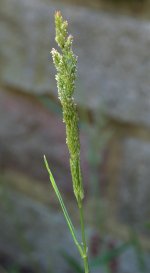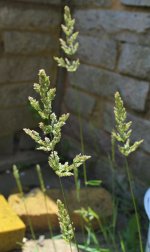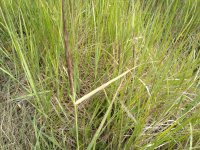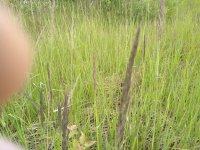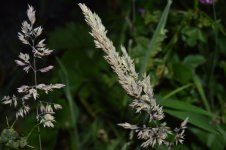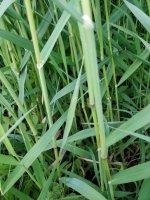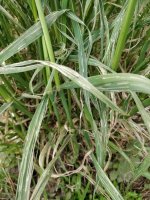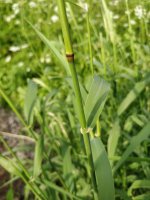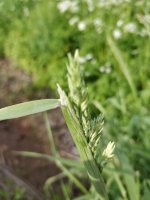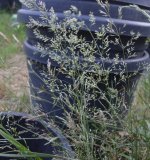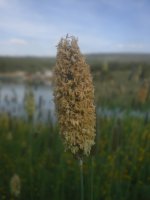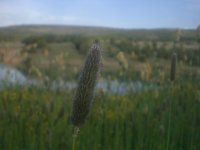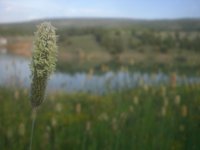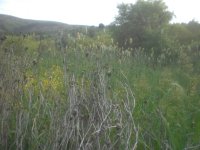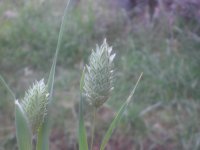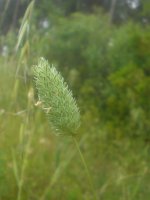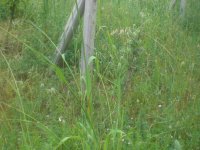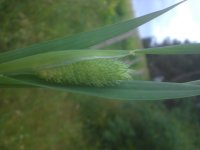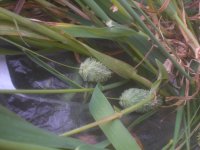-
Members of the previous forum can retrieve their temporary password here, (login and check your PM).
You are using an out of date browser. It may not display this or other websites correctly.
You should upgrade or use an alternative browser.
You should upgrade or use an alternative browser.
Phalaris/other grass types ID thread
- Thread starter zombicyckel
- Start date
Migrated topic.
Jagube
Established member
@grollum: The flower heads are roughly 3" long. I'm confused because I've found other grasses in my yard that also made me think of arundinacea, but they're quite different. Will try and post pics later.
What's strange about the color? In the pics that come up on Google Images, some flower heads have a magenta tinge while others are green, so either there is some variation or some of the pics are misidentified / mislabeled?
What's strange about the color? In the pics that come up on Google Images, some flower heads have a magenta tinge while others are green, so either there is some variation or some of the pics are misidentified / mislabeled?
betelgeuse
Rising Star
@grollum - The Phalaris arundinacea plants I've seen growing in the wild are all pretty big, they come up to about mid-chest height on me, and the inflorescences are at about shoulder height (I'm quite short, though). Their leaf blades are also much wider than your average grass, about a ring finger in width. I've never seen a cultivar though, other than variegated var. picta, so I'd be interested to compare. I'm 100% sure that the plants you posted pictures of in post #212 are P. arundinacea, though. The "brick wall" effect is visible with the naked eye, but you do need to look really closely as the lines are very small, ideally holding the sheath up to the light. It's easier to see with a hand lens or a magnifying glass.
@Jagube - Please do post more pictures, that grass looks unusual to me too, although I definitely see the resemblance to Phalaris arundinacea and wouldn't rule it out.
@Jagube - Please do post more pictures, that grass looks unusual to me too, although I definitely see the resemblance to Phalaris arundinacea and wouldn't rule it out.
What about this one?I found them growing in huge field in clumps:
The leaves have this slight blue tinge to them and seem to be a bit sturdier
The leaves have this slight blue tinge to them and seem to be a bit sturdier
Attachments
that does not look like arundinacea to me.
downwardsfromzero
Boundary condition
Phragmites australis. Don't get over-excited about the roots, which are effectively inaccessible in the pictured situation.oceanman said:What about this one?I found them growing in huge field in clumps:
The leaves have this slight blue tinge to them and seem to be a bit sturdier
Try brewing and extracting the flowers. There's an outside chance of something being in there. Pay attention to time of day at harvest.
grollum
Rising Star
@betelgeuse thanks for your further explanations. I am also quite sure that I have found arundinacea. Will take a magnifier with me next time I visit them to check the leaf blades.
Seeds should be ready now.
@Jagube The color feels strange to me because it looks to green to me and somehow to rounded. That might be caused by the camera. The arundinacea I saw so far were a bit brighter in color. A bright green beige mix. Hard to describe. The color can also changed by the camera...
Seeds should be ready now.
@Jagube The color feels strange to me because it looks to green to me and somehow to rounded. That might be caused by the camera. The arundinacea I saw so far were a bit brighter in color. A bright green beige mix. Hard to describe. The color can also changed by the camera...
Jagube
Established member
Freezpirit
Rising Star
I see somes plants near my house that can be phragmite or phalaris, can you help me to identify them?
The first 4 images are one bunch and the 3 second images are another.
I don't think the are the same.
The first 4 images are one bunch and the 3 second images are another.
I don't think the are the same.
Attachments
posts 230, 234, 235, and 236 are 100% not phalaris grasses.
Try looking around waterways (creeks, rivers, lakes, etc).
Try looking around waterways (creeks, rivers, lakes, etc).
Jagube
Established member
I think you got the numbers wrong, because your post is 233.dreamer042 said:posts 230, 234, 235, and 236 are 100% not phalaris grasses.
Oh! your right, mods can see where posts have been deleted so it skews the numbering system. Sorry bout that.
Specifically the posts by oceanman, Freezpirit, and Jagube.
Specifically the posts by oceanman, Freezpirit, and Jagube.
Looks very promising!Gabber777 said:that????
Grass #1:
This grass grows intermingled with syrian rue in a certain habitat. Without much research, I took it for granted that it is P. aquatica and drank a crude extract along with tea from the syrian rue that it grows together with. I was very impressed and satisfied with the result. Very gentle, loving, spacious, and flowing. In two trials I drank up to 25g of whole plant decoction and the visual effects were still not imposing but a spirit molecule effect modulated by an apparently sophisticated profile of total alkaloid synergy was there. Felt very healing and "right" both during the experiences and in the afterglows. I had harvested in Spring and the amount was enough for just two trials. I later visited the habitat in Summer and the plants with familiar flower heads had either disappeared or dried out and I did not know how to identify it without the heads.
Right now I am doubting that this grass really is P. aquatica, the flower heads definitely are different from the pictures I see online...
I had taken some pictures of this grass years ago and not any since... I will take better photos this coming spring.
In the mean time, any clues that you brothers and sisters can provide will be highly appreciated!
Thank you.
This grass grows intermingled with syrian rue in a certain habitat. Without much research, I took it for granted that it is P. aquatica and drank a crude extract along with tea from the syrian rue that it grows together with. I was very impressed and satisfied with the result. Very gentle, loving, spacious, and flowing. In two trials I drank up to 25g of whole plant decoction and the visual effects were still not imposing but a spirit molecule effect modulated by an apparently sophisticated profile of total alkaloid synergy was there. Felt very healing and "right" both during the experiences and in the afterglows. I had harvested in Spring and the amount was enough for just two trials. I later visited the habitat in Summer and the plants with familiar flower heads had either disappeared or dried out and I did not know how to identify it without the heads.
Right now I am doubting that this grass really is P. aquatica, the flower heads definitely are different from the pictures I see online...
I had taken some pictures of this grass years ago and not any since... I will take better photos this coming spring.
In the mean time, any clues that you brothers and sisters can provide will be highly appreciated!
Thank you.
Attachments
Grass #2:
I am certain that this is a species of Phalaris, but not sure which. It resembles brachystachys but apparently there are other species like P. canariensis which have similar flower heads.
It grew around a farming area and where it was on wild land, it was of tiny stature, and where it was on cultivated land, it was huge taller than my height (probably because of fertilizers).
These photos are also from years ago and I never got to bioassay this species. I am looking forward to doing that this coming Spring
I am certain that this is a species of Phalaris, but not sure which. It resembles brachystachys but apparently there are other species like P. canariensis which have similar flower heads.
It grew around a farming area and where it was on wild land, it was of tiny stature, and where it was on cultivated land, it was huge taller than my height (probably because of fertilizers).
These photos are also from years ago and I never got to bioassay this species. I am looking forward to doing that this coming Spring
Attachments
Wow, if P. canariensis is a domesticated version of P. brachystachys (https://eurekamag.com/pdf/004/004266500.pdf) then grass #2 is most likely P. brachystachys. I thank myself for answering my question on the forum :d
But grass #1 remains a mystery. I doubt it is phalaris at all, but it was active as daylight. Alopecurus pratensis perhaps? Anyone?
But grass #1 remains a mystery. I doubt it is phalaris at all, but it was active as daylight. Alopecurus pratensis perhaps? Anyone?

